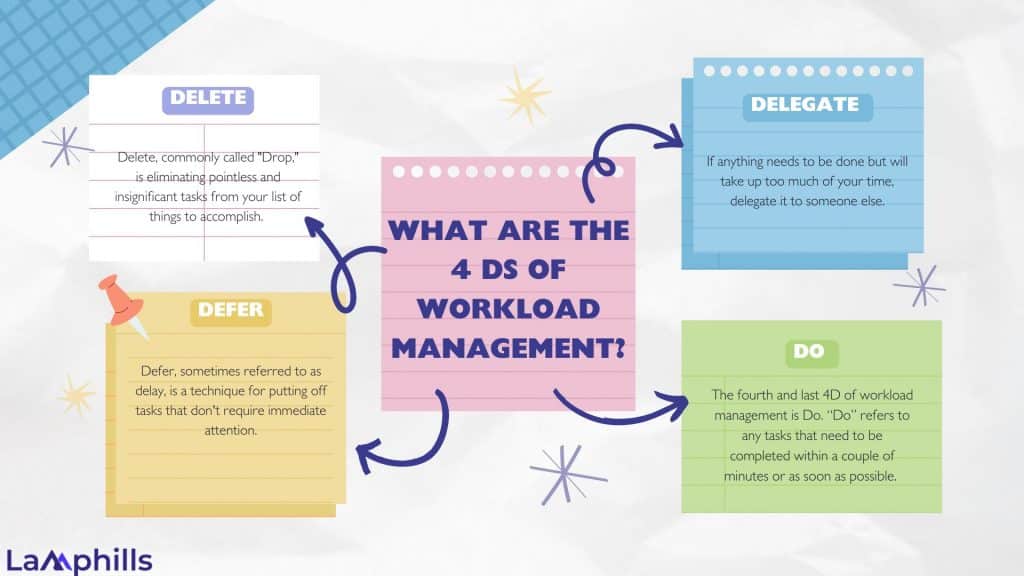If there’s one thing project managers have discovered over the course of many years of project management, it is that improper workload management negatively impacts productivity. However, there are still many difficulties in practice.
Due to inappropriate workload distribution, employees frequently express three work-related issues: stress, dissatisfaction, and inefficiency. Even if this list is not comprehensive, it is sufficient to begin discussing how to manage workloads more effectively. What is workload management, and why is it so important? Find answers to these questions and more in our guide below.
Key Points
- Workload management refers to how a manager or team leader assesses and regulates a team’s workload to maximize productivity.
- Workload management isn’t a linear process—it’s a continuous cycle of planning, tracking, assessing, and (re)adjusting to achieve project success.
- The right tools and processes help you allocate your team fairly so nobody is overworked or underutilized.
- Benefits of workload management include reducing stress at work, enhancing work schedules, optimizing the usage and distribution of resources, and satisfying clients’ needs.
What is Workload Management?
Workload management refers to how a manager or team leader assesses and regulates a team’s workload to maximize productivity.
It considers the skill sets, availability, capacity, throughput, and any other factors that may impact the quantity and type of work each team member should receive. Managers, team leaders, and stakeholders skilled in workload management build successful project schedules in which team members are sufficiently busy with work they enjoy and enjoy. At the same time, no one is overloaded or sitting idle.
Why Is Workload Management Important?

Workload management is important for any organization that strives to be operationally efficient and profitable.
Ultimately, workload management aims to achieve the best results for your business—by lowering wasteful costs, maximizing ROI, promoting high productivity, and making the most of your most valuable resource—your people.
The following are a few benefits of workload management.
#1. Reduce Stress at Work
To reduce workload stress, ensure your team is aware of and equipped to handle their responsibilities. Redistributing responsibilities or providing management training can reduce workplace stress by giving workers only jobs they can do. Managing one’s workload can also help one feel less stressed, provided the job is only moderately assigned.
#2. Enhance Work Schedule
Work schedules are improved by the use of workload management procedures and techniques. By identifying every employee’s regular tasks, work management helps managers match the right worker to the proper job, increasing productivity and effectiveness. Workload management reduces waste in businesses. Organizations can eliminate problems that cause delays, improve coordination, and reduce redundancy in their operations by carefully planning, scheduling, and carrying out tasks. All these consequences can cause better use of resources.
#3. Optimize the Usage and Distribution of Resources
Workload management facilitates the distribution of resources among tasks and initiatives with the highest potential to generate substantial returns on investment. Workers can dedicate their time and energy to the project’s critical areas to meet deadlines and cut costs. Additionally, it saves firms money by cutting down on waste and allocating limited resources to more fruitful endeavors.
#4. Satisfy the Needs of Clients
Human resources and project managers can increase their efficiency through workload management, resulting in fewer delays and faster project completion. Meeting project deadlines and budgets can help businesses better meet client expectations, boosting sales and fostering corporate expansion. Managers can make better judgments by enabling clients to modify project requirements more easily with the help of work management tools.
What Are the 4 Ds of Workload Management?

The 4 Ds of workload management are a framework to help prioritize tasks and manage time effectively. These four strategies are designed to streamline workloads and boost productivity:
#1. Delete
Delete, commonly called “Drop,” is eliminating pointless and insignificant tasks from your list of things to accomplish. The first step is letting go of futile and insignificant work and personal commitments.
Although you may feel anxious about not committing to something, you need not give up everything in your life. Remember that you should only give up on items that steal your time. Examine your daily schedule and determine which activities take up the most time. Throw them away.
You can do the following to clear your schedule and get rid of time-consuming tasks:
- Say NO: Be able to say no to tasks when somebody puts any unexpected requests on your to-do list or does them as soon as possible. Review your existing to-do list before taking on more work.
- Unnecessary meeting: Avoid attending meetings that aren’t directly related to your job. Also, try to keep meetings under 45 minutes in length.
- Mails: Keep your inbox clean. When you get flooded with spam or promotional emails, which waste a lot of time and energy, unsubscribe from them.
#2. Delegate
If anything needs to be done but will take up too much of your time, delegate it to someone else. A delegate takes charge of a project or task on your behalf.
For instance, if you need to write some code and know-how, but the time you would spend on coding could be used on something more important, you may want to delegate the task to someone in your company.
It is also possible for an organization to have many tasks that cannot be performed by one person. And you may not be able to complete all the work by the deadline, so it is better to delegate someone to do the job.
The following are examples of delegation:
- Reporting: If you are responsible for conducting a market survey, let a research team do it. Rather than collecting and analyzing the information yourself, they will create the questionnaire, collect the data, and then report back to you. This saves you a lot of time.
- Repetitive Jobs: Several repetitive tasks can be assigned to someone with appropriate skills, such as invoicing and expenses, collecting late payments, and posting social media updates.
- CV shortlisting: When hiring new personnel, it is better to let your subordinates choose CVs. However, you remain in control of the final selection decision.
#3. Defer
Defer, sometimes called delay, is a technique for putting off tasks that don’t require immediate attention. You can plan it for when you have the time or are free. Deferring is saying “no” to tasks that are not as important right away.
The fundamental idea behind the defer notion is that you can postpone chores until a later time if you cannot remove them from your to-do list but do not feel that you need to devote your time to them right now.
For example, it’s not necessary to watch a movie with friends right now, but you can decide to watch it on the weekends.
The following are examples of deferring:
- Meet deadlines: Establish project completion dates based on the due dates of individual projects.
- Reading mail: If you receive an email, don’t worry about reading it and responding immediately. Set a time to reply and check your email, as not every message requires urgent action.
- New Request: One of your colleagues may make you a new request; if it is not urgent, you can plan a time later to deal with it.
#4. Do
The fourth and last 4D of workload management is Do. “Do” refers to any tasks that must be completed within a few minutes or as soon as possible. These urgent tasks come after filtering tasks through the previous 3D steps.
Usually, such tasks are essential and urgent. They must be completed as soon as possible, and the consequences of not doing them could harm your career or life. Be sure not to pile up such tasks but rather complete them as quickly as possible.
The following are examples of “do” tasks:
- Scheduled tasks: A scheduled task has been assigned to you and should be accomplished on time. Attending meetings, preparing presentations, and working on projects are examples of scheduled tasks.
- Urgent tasks: Getting mail sent, returning a phone call, and printing a report are urgent tasks that must be completed soon.
- Two-minute tasks: If the task can be completed within two minutes, you should do it immediately if it will benefit your career or life.
Workload Management Example
Let us look at three workload management examples to understand the process clearly:
Example 1
In the first workload management example, let us take ABC Corp., a leading tech company struggling to keep up with the demands of its clients. They are experiencing a high volume of incoming requests, which causes delays and missed deadlines. To address this issue, the project manager can implement a robust team workload management system to track and prioritize tasks based on urgency and importance. As a result, this will improve their response times, reduce errors, and boost customer satisfaction levels.
Example 2
Next on the list is Kimberly Inc., a fast-growing startup facing a different challenge: managing the workload of remote teams. With employees working across different time zones and geographies, it is becoming challenging to coordinate tasks and ensure everyone is working efficiently. To overcome this, a manager can implement a cloud-based project workload management tool for team members to collaborate and track progress on shared tasks in real time. It will streamline their workflow, improve communication, and achieve better results.
Example 3
In the last example, John Ltd., a large manufacturing company, struggles to optimize its production line. It has many idle machines and needs more workers to manage them effectively. To address this issue, a workload management system can be implemented to balance the workload across different machines and prioritize tasks based on complexity. It will reduce idle time, improve output, and increase profitability.
How to Manage Workload Effectively?: 10 Effective Strategies
Managing your team’s workload is no cakewalk. Optimizing workload management priorities for available resources can be challenging, especially when you are exploring business strategies to find out what works best for your business. Below are practical strategies on how to manage it effectively.
#1. Find out Your Team’s Workload and Capacity
As everyone is multitasking and work is scattered across multiple projects, locations, and tools, it’s tough to gauge the total work. Knowing that is the first step for efficient resource planning and project management.
Then, you can calculate how much each resource handles and what they could take on. You can also determine your team’s actual workload by streamlining your resource planning and management. For that, you need to:
- Create a list: List all the assignments and projects your group is working on.
- Control Deadlines: For every resource, find the schedule and scope of all the tasks and projects. This involves figuring out whether they are working on big, intricate projects or more minor, more focused ones.
- Divide to Win: Divide each project into its component tasks, subtasks, and work streams. This will provide you with a more comprehensive view of the work done by your entire team. After that, you can divide it up into smaller chunks to determine their daily or weekly workload.
- Set Your Priorities: Sort all of the tasks or projects into priority lists based on their urgency and importance. The team members will be better able to schedule because they will also know what needs to be done first. In addition to determining the workload you must complete, you must compute each employee’s utilization. You can use this to determine how much free time each resource has to take on additional tasks. You must also consider your team’s vacation or leave policies, regular tasks, cross-functional projects, work meetings, etc.
Download our capacity planning template below; this template can help you, as a project manager, calculate the team’s actual workload, track resource availability, and allocate tasks more efficiently.
Lamphills Capacity Planning Template
#2. Hire an Operations Manager

If you’re a leader at a new agency without a formal project management solution, you’ll have difficulty moving projects from start to finish. Instead, consider hiring an operations manager to help take the burden of your project management challenges and ensure nothing falls through the cracks.
If you can’t reasonably afford to make operations a full-time job, at least ensure your leads understand the roles and responsibilities associated with operations so they can best manage projects for their team.
You won’t regret detailing how the entire organization will manage task creation and staff workloads. While doing this takes time and focus, it greatly benefits your agency.
Creating an environment where employees understand what is on their plate will remove the stress of chaos and disorganization. It should also improve delivery dates and manage client expectations.
#3. Minimize Multi-Tasking

Multi-tasking may seem efficient, but no one can do two jobs at once efficiently.
In reality, someone who is working on multiple tasks at one time is likely to be much less productive than if they were focusing all of their energy on just one thing.
Context switching is known to be highly disruptive, as people need to take time to reorient themselves with the task at hand, work out what they need to do, and maybe log into different software and remember their passwords. It’s better to block out time to focus on one thing at a time.
#4. Monitor Schedules and Projects Regularly
You should have a realistic view of your projects and team’s schedules and competencies and be flexible enough to alter plans if necessary. Tracking your team’s workloads and calculating their utilization percentage in real-time can help you anticipate challenges and avoid burnout.
For instance, if you calculate your team’s utilization and notice a resource going over 80%, you can reassign some of their responsibilities or tasks to lighten their schedule.
Also, if this pattern persists, you might be taking on more projects than your team can handle.
#5. Provide Ample Time for Feedback, Sick Days, and Vacations
Build plenty of time into project schedules for delays and invisible work that you know will happen. Effective team communication through email, Slack, or whatever else you use is essential to keeping up the pace and preventing projects from coming to a halt when someone goes on vacation.
Ideally, you’re building those subtasks into your project schedules, but there’s always at least a small amount of additional back-and-forth that doesn’t make it onto the schedule. Make sure to give enough time to cover the work that is needed.
Project leads don’t always account for vacation, even though most employees get anywhere from two to four weeks per year. If that’s not scheduled into your workload management process, you run the risk of a severe project bottleneck.
Businesses should scale back the total expected hours per year to more reasonable amounts so projects have a good buffer zone for unexpected or even planned resource changes.
#6. Allocate Tasks Fairly and Evenly
The adage “many hands make light work” isn’t always applicable in resource management. On the other hand, if the project is poorly planned and employees are unclear about what they need to do and why, having too many hands could land you in trouble with some team members being left on standby. Productivity can significantly differ if your team can change jobs daily or weekly when working on numerous projects.
Team workload management requires that project management professionals delegate work well and assign tasks in accordance with team members’ capacities, strengths, capabilities, positions, and functions at the company. The resource leveling technique can be very useful in this, helping you optimize resources by finding the golden middle between overbooking and spreading them too thin.
#7. Make Realistic Deadlines and Task Estimates
Task estimating will assist you and your group in strategically planning the project and establish realistic timelines for all parties. Everyone works at a different speed, so it’s essential to know how long a specific task will take them to do. With attainable deadlines in place, you’ll have greater visibility and control over your team’s workflow and can avoid overworking or underworking any team member. As a result, no project will be left hanging.
#8. Ensure That the Objectives You Establish Are SMART
In business terminology, SMART stands for Specific, Measurable, Attainable, Relevant, and Timebound. “Specific” refers to meeting a particular need or focusing on a small area that needs improvement; “measurable” denotes that the goal can be measured; “attainable” denotes that the plan is doable; “relevant” indicates that the goal is in line with other business objectives; and “time-bound” implies that the goal has a deadline. SMART goals can assist your team in rationalizing the tasks you assign and understanding how their contribution to the project will contribute to its success, making it easier to secure good employee workload management.
Read more on SMART SALES GOALS: How To Set Them With Examples
#9. Reallocate Tasks
Start allocating jobs to your team members once you’ve sorted groups of tasks and who can work with them correctly. Depending on the duties you reassign, you can decide whether to redistribute them all at once or gradually. Explain your decision to your employees in as much detail as possible, no matter how many duties you reassign. Giving your workplace context around your decision justifies the schedule change and explains why the new tasks and schedule modifications may be the best for the team.
#10. Set a Good Example of Workload Management for Your Team
If your team feels they’re constantly overworked, you will risk burnout.
Despite all your efforts to improve your workload management strategy, it could be time for some introspection. Are you and the other leaders at your agency modeling healthy relationships to work?
Or are you leading by example down a path full of work addiction, after-hours stress responses to the crisis of the day, and so on?
If you suspect the issue is more of a cultural issue than actual overload, it’s time to set an example. Team leaders and managers can help by showing what a healthy relationship with work looks like. Of course, to be that good example, leaders must find a way to avoid overworking themselves.
How Do You Allocate Resources in Workload Management?
Resources are allocated based on factors such as skills, availability, and workload capacity. Project management apps and workload management software integrations can streamline identifying available resources and assign them to project tasks accordingly.
Top Workload Management Tools
Bottom Line
In conclusion, workload management’s primary objective is to enable your team to produce outstanding work they can be proud of without running the risk of burnout; all other benefits are only a byproduct of this. It is not about completing projects on time. By prioritizing a balanced workload and creating a culture of open communication, you’ll inspire a happy team ready to take on any project.
Similar Articles
- Social Media Community Management: A Complete Guide
- 15 Essential Tools Every Small Business Owner Should Know About.
- Best Tools for Employee Satisfaction Measurement in 2024
- WORK PERFORMANCE GOALS: How To Set Them With Examples






